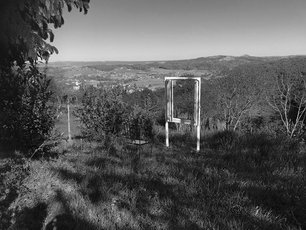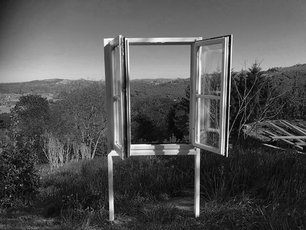Utopia lies at the horizon. When I draw nearer by two steps, it retreats two steps. If I proceed ten steps forward, it swiftly slips ten steps ahead. No matter how far I go, I can never reach it. For what might utopia be useful? It is useful for this: to keep walking. (Window on Utopia) Eduardo Galeano
The inspiration for the project comes from William Morris’s novel of the same name written in 1890, which analyses identities within utopian so-cialism in a science fiction surrounding. These identities, transformed by revolution, experience an idealized vision of life in small, autonomous com-munities. Like Morris’s book, the WINDOW ON UTOPIA argues in favor of radical change in social relations, considering the seclusion of the human race as a global problem which distances us from substantial values and makes one identity rate the other. The window stands alone in the landscape, looking at a panoramic view of the Waldschach hills. But what lies beyond, when you take two steps, then two steps more? Follow the line of sight and you will pass through the Balkans, Turkey, Syria. Lands rich in culture, history and unspoiled nature but torn apart by tribalism, and religious separatism. Generations have been forced to flee, are still fleeing, as fanatics fight to impose their crazed, twisted visions of isolated, ethnically and religiously pure “utopias” on their homelands.
site specific installation, waldschach, austria, 2021 | wooden window, wood, light | text: cormac franklin

